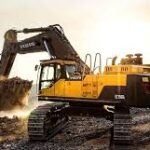Should You Buy Original Equipment Manufacturer Tracks Or Aftermarket Tracks?
All heavy equipment used in excavation, earthmoving operations and construction projects requires rubber tracks. This makes them an essential component of this heavy equipment. For this reason, you must always ensure that your heavy equipment has the best tracks at all times for enhanced reliability and performance. If you realise your rubber tracks are worn or damaged, consider replacing them immediately.
You always have two options when selecting rubber tracks to replace your damaged ones. These are the original equipment manufacturer tracks (OEM) and the aftermarket tracks. You must know that each track option has advantages and disadvantages, which you should study to decide on the ideal choice for your situation.
The Difference Between Original Equipment Manufacturer Tracks And Aftermarket Tracks
- Quality and compatibility
Original equipment manufacturer tracks are manufactured by the manufacturers or companies that produce your original tracks in your excavator. These OEM tracks are specially designed to meet the exact standards and specifications of the excavator’s manufacturer. This makes the tracks reliable and compatible and gives them excellent performance. They are also compatible with specific make and models of excavators suffering a seamless integration with the existing parts.
Aftermarket tracks vary in quality and compatibility since the original manufacturers of excavators do not manufacture them. Though some aftermarket tracks can be compared with OEM tracks, their quality is lower and cannot meet the same standards as the OEM tracks. Therefore, when buying aftermarket tracks, be careful of the brands you select. Always choose brands that make high-quality aftermarket rubber tracks that are compatible with the make and model of your excavator.
- Cost
Regarding cost, OEM rubber tracks are more expensive than aftermarket rubber tracks because of factors like quality assurance, engineering and brand reputation. The aftermarket rubber tracks are always more affordable, making them an excellent option for most people who intend to save money. However, while OEM rubber tracks may be expensive, investing in them may be cheaper in the long run since their performance, reliability, and durability are superior to aftermarket rubber tracks.
- Availability and lead time
Aftermarket rubber tracks are readily available from various distributors and suppliers. They offer flexibility and options to operators who need them and cannot wait for production and delivery. However, the OEM tracks are only available through authorised dealers and can be accessed when needed. Unfortunately, in some cases, you may have to wait for the production and delivery of the OEM tracks for some models.
- Warranty and support
Both OEM and aftermarket rubber tracks come with warranties that offer coverage. In case there is an issue with the artistry or materials making the OEM track, you can always get covered by the warranty provided. Also, OEM tracks are made by reputable manufacturers who guarantee the quality of their products. When it comes to the aftermarket rubber tracks, their warranty coverage varies. Their warranty comes with conditions like duration, support options and coverage limitations. Also, when you get your aftermarket rubber tracks from unreliable manufacturers, you may never get covered, even if you get tracks with defects.
- Longevity And Performance
OEM rubber tracks are made by equipment manufacturers who meet durability and performance standards. They also do rigorous testing and quality control, ensuring that they offer long-lasting and reliable performance tracks. However, the performance and quality of aftermarket rubber tracks depend on factors like manufacturing process, brand and material used. Therefore, you cannot be sure of these tracks’ performance level or longevity unless you use them.
Both aftermarket and OEM rubber tracks at Bearcat NZ offer benefits to the equipment owners. It is up to you to choose the most suitable option for you, depending on your preferences.…










